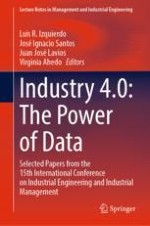2023 | Buch
Industry 4.0: The Power of Data
Selected Papers from the 15th International Conference on Industrial Engineering and Industrial Management
herausgegeben von: Luis R. Izquierdo, José Ignacio Santos, Juan José Lavios, Virginia Ahedo
Verlag: Springer International Publishing
Buchreihe : Lecture Notes in Management and Industrial Engineering
